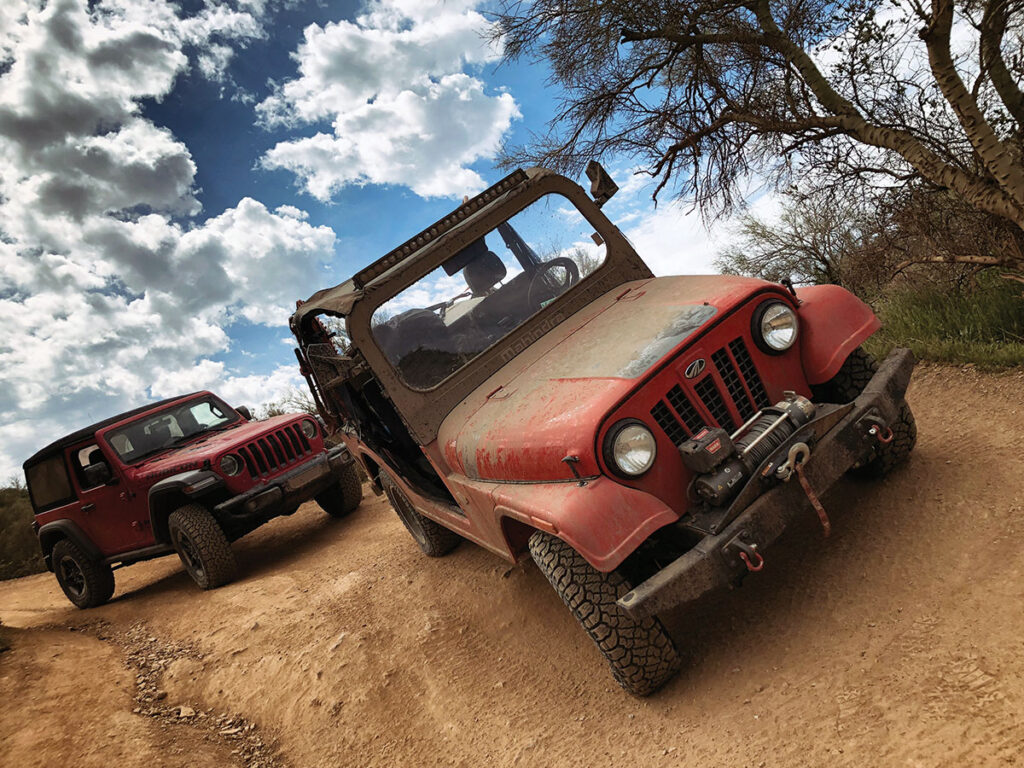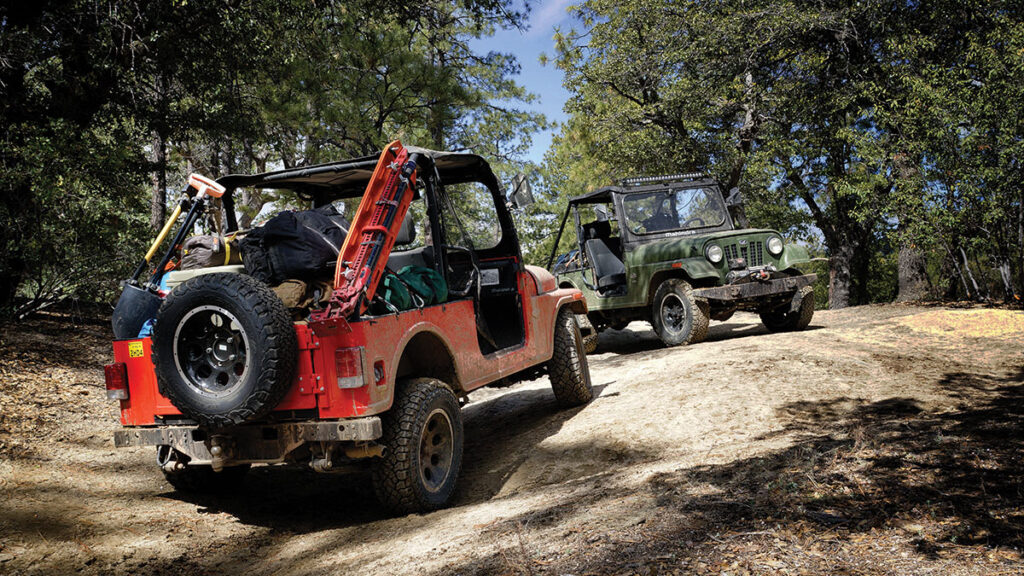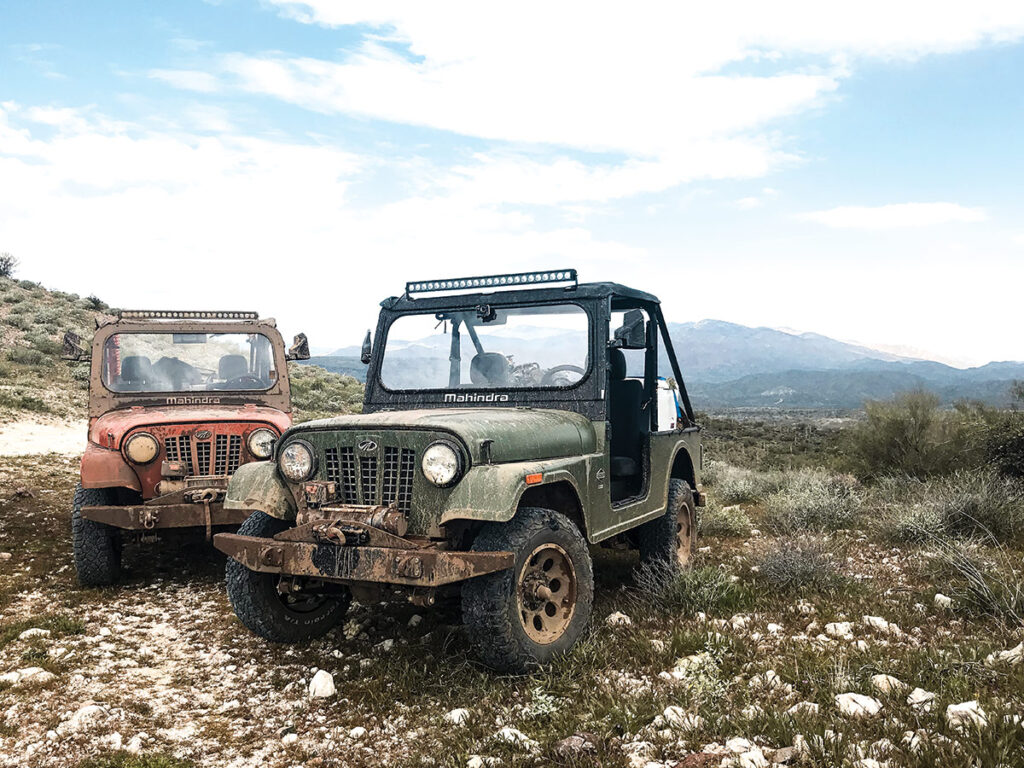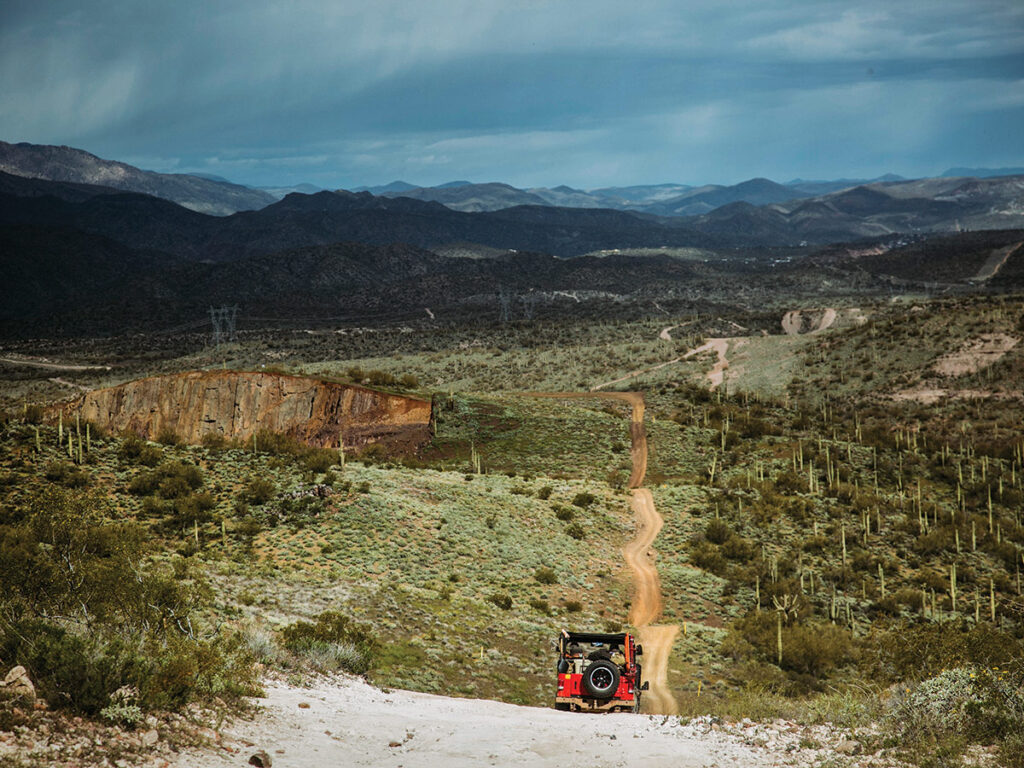At CarnivoreWeb.com, we independently review products and outfitters. However, we may earn a commission when you purchase products through links on our site. Read our affiliate policy. Read about how we test products.
The Mahindra ROXOR is a decidedly old-fashioned approach to four-wheeling, born from Willys CJ DNA.
Visit a few classic car shows, and you’ll soon come across at least one crotchety old-timer who won’t hesitate to show his disdain for new vehicles. “Back in my day,” he’ll proclaim, “they built cars to a different standard — real steel, not like the Tupperware junk they churn out these days.” While you may be tempted to write this off as the rose-tinted vision of someone living in the past, his view may not be entirely inaccurate.
The cars and trucks of yesteryear could be considered primitive by today’s standards. They were designed without using modeling software and computational fluid dynamics simulations. Parts were machined by hand with less-precise tolerances, and assembled by hand as well. Mechanical systems were simpler with fewer moving parts and minimal electronics. Features we take for granted today, such as air conditioning, a radio, and even seatbelts, were optional if they were available at all.
These vehicles represented a different mindset about transportation. They were built to last because they had to. Your grandparents or great-grandparents rarely traded in their car for the latest model. More often than not, it was their only vehicle and they ran it until it would run no more. As a result, its parts were made to be repaired, rebuilt, or replaced by the owner, instead of only by dealer technicians with specialized tools. This was especially true during World War II, since the escalating war effort led to a scarcity of raw materials in the commercial market.

From Willys to Mahindra
The lineage of the Mahindra ROXOR goes back to the end of WWII. The Indian company was founded in October of 1945 by two enterprising brothers, J.C. and K.C. Mahindra. Beginning as a steel importer, Mahindra quickly transitioned into the growing automotive industry. After noticing the simple and durable Willys-Overland four-wheel-drive vehicles in use by the American military — commonly known by the nickname jeep before that name became its own brand — the Mahindra brothers saw a business opportunity. They acquired a license to produce the Willys CJ series in India, beginning with parts kits they imported and assembled.
This turned out to be a wise decision, since the license enabled Mahindra to produce its own vehicles based on the CJ architecture. Meanwhile, the Willys-Overland company fell on hard times, becoming Kaiser-Jeep, which was sold to AMC, then to Chrysler, which eventually merged with Fiat. The Jeep brand we know today followed this divergent path, but Mahindra has continued to manufacture Willys-style vehicles for more than 70 years, growing into a multi-billion-dollar conglomerate as a result of this first successful automotive venture.

The most direct modern descendant of this Willys license is known as the Mahindra THAR, a compact SUV that’s sold in India as a street-legal vehicle. Ironically, what began as Mahindra importing American-made parts kits and assembling them in India has now turned into just the opposite. In spring 2018, the company began producing parts kits loosely based on the THAR, which are exported to the United States and assembled in Michigan by Mahindra Automotive North America (MANA). The product of this venture was dubbed the Mahindra ROXOR.
Meet the ROXOR
Every ROXOR begins with a steel ladder frame, which is boxed for increased strength — an upgrade over the C-channel frame found on early Willys CJs. Suspension is equally simple, with leaf springs and shocks mounted to full-floating front and rear axles. Hydraulic-assisted front disc brakes and rear drum brakes bring the small vehicle to halt. Hydraulic power steering improves maneuverability of the 16-inch steel wheels and Goodyear all-terrain tires.
Mahindra’s M2DiCR direct-injection turbo-diesel engine was selected to power the ROXOR. This 2.5L four-cylinder motor produces 62 hp and 144 lb-ft of torque, and has proven its durability in other Mahindra vehicles including the THAR. It’s mated to a five-speed manual transmission and two-speed transfer case; an optional six-speed automatic transmission is also available for 2019 models. Mahindra says the 12-gallon fuel tank should provide a maximum range of approximately 350 miles.

The steel body comes in six standard colors: red, blue, green, tan, black, or white. A rollcage is standard, but no windshield, mirrors, doors, or top are included. These are available as options, ranging from a simple vinyl bikini top to a fully enclosed hardtop with windshield wipers and roof-mounted air conditioning unit. An upgraded front bumper, Warn winch, spare tire, and tow hitch are also available.
Standard interior features are equally spartan, with a center-mounted speedometer with digital tach and fuel readout, a switch for the halogen headlights, two bucket seats, and a bedliner-coated floor. The sole conveniences are two cupholders and a 12V power port. Optional interior upgrades include a heater, rear bench seat, and Bluetooth sound bar.
The ROV Drawback
There’s one downside to the ROXOR’s anachronistic design — while it hasn’t changed much since the 1940s, road safety laws in the United States certainly have. Making the ROXOR into a fully street-legal vehicle means adding all sorts of federally mandated features that‘d distance it from its simple roots, not to mention substantially drive up its cost. Therefore, it’s designated as a Recreational Off-Highway Vehicle (ROV) in the United States, falling into the same category as side-by-sides or UTVs. A handful of states allow ROVs to be registered and driven on public roads under specific conditions, but in most cases the ROXOR can only be used off-road.
Our Impressions
By present-day standards, the ROXOR is tiny, measuring just over 12 feet long and 5 feet wide — smaller than a Mazda Miata. However, it still manages to feel spacious due to the upright seating position and barebones interior. This 6-foot-5-inch author never felt cramped, even after hours behind the wheel. Our loaner came with the optional cloth top and windshield, both of which we were thankful for, although the lack of wipers meant we had to stop and clean mud off the Lexan on more than one occasion. There’s lots of usable cargo area in the rear, just bring some bungee cords or ratchet straps so your gear doesn’t go flying out after the first bump.

You won’t be winning any races with 63 hp on tap, and the 0-to-60 time is never because top speed is electronically limited to 45 mph (55 for 2019 models). A few tuning companies offer engine computer re-flashes that can boost output to 90-plus horsepower and increase top speed to 70-plus miles per hour, but these mods would void the two-year/12,000-mile warranty and might impact the drivetrain’s longevity.
Fortunately, the turbo-diesel engine’s ample low-end torque pairs beautifully with the manual transmission’s short gearing. Throw the transfer case into 4-Lo, drop into first gear, and the ROXOR will crawl up dizzyingly steep inclines without breaking a sweat. The low curb weight, small wheelbase, and short overhangs make it feel even more nimble. We can only imagine what one of these can do with the optional locking differentials and hubs (our loaner didn’t have either).
At higher speeds on gravel or dirt fire roads, the ROXOR sometimes felt a little bouncy and squirrely in comparison to a modern vehicle, but it was always controllable. The five-speed manual gearbox is beginner-friendly with long throws and a light and forgiving clutch — we wouldn’t dream of paying the $3,000 premium for an automatic. Even though it’s far from fast, it’s a ton of fun to wring out every bit of power as you row through the gears.
We can’t deny that vehicles have improved in many ways since the 1940s. They’re faster, safer, more efficient, and packed with countless convenient features. But we also recognize the value of not messing with a good thing. In this regard, the ROXOR feels like a return to form, a distillation of the most important elements of a 4×4. If you want to sit in massaging leather seats and listen to Stravinsky through a 13-speaker stereo, get a Range Rover. If your idea of a good time involves reaching your destination slightly sore with mud-spattered clothes, a smile on your face, and a story to tell, the ROXOR might be right for you.
2018 Mahindra ROXOR Specs
- Engine: M2DiCR 2.5L four-cylinder turbo-diesel – 62 hp at 3,200 rpm, 144 ft-lb at 1,400-2,200 rpm
- Transmission: 5-speed manual
- Driveline: 2WD/4WD with two-speed transfer case and 3.73:1 full-floating axles
- Brakes: 9-inch front disc and 11-inch rear drum with dual hydraulic vacuum assist
- Dimensions: 148 by 62 by 75 inches
- Dry Weight: 3,000 pounds
- MSRP: $15,999
- URL: www.roxoroffroad.com

Editor’s Note: This article originally appeared in Carnivore Magazine Issue 3.
More Overland
- TAV “Ranger Goat” Tacoma Review: Proof Of Concept
- Mahindra ROXOR: Off-Road Anachronism
- Hellwig Products 2019 Ford Ranger Review: Home On The Ranger
- Defender 6×6: Can-Am’s Maximum Utility Vehicle
Why You Can Trust CARNIVORE
Since its launch, CarnivoreWeb.com has been a trusted authority on hunting, fishing and wild food, delivering expert insight for outdoorsmen who live the field-to-table lifestyle. More than a hunting and fishing site, CarnivoreWeb.com covers the full spectrum of the modern outdoors—from rifles, bows, and fishing gear to cooking, conservation and adventure.
Our contributors are drawn from across the hunting and angling world, including seasoned guides, lifelong hunters, competitive shooters and outdoor writers with decades of field experience. Every review, article and feature is built on firsthand testing, deep research, and an unwavering commitment to accuracy.
Commitment to Journalistic Principles
At CarnivoreWeb.com, upholding journalistic integrity is our top priority. We follow strict editorial standards to ensure all content is accurate, transparent, and unbiased. Our editors and writers operate independently, free from outside influence, advertisers or stakeholders. We adhere to established journalistic codes of ethics, holding ourselves accountable for the information we publish, correcting errors when they occur and disclosing any potential conflicts of interest.
This commitment ensures that our readers can trust CarnivoreWeb.com to provide reliable, honest coverage that helps them make informed decisions—whether selecting gear, honing outdoor skills or preparing wild game.
Find out more about our Editorial Standards and Evaluation Process


